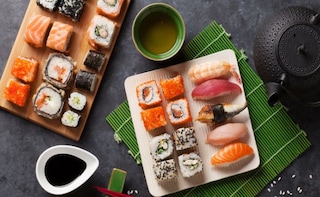The sushi platter comes on a bed of liquid nitrogen smoke. It's just a little drama to herald the arrival of the house special- a huge platter of sashimi and nigiri; take your pick of magu (red tuna), sake (salmon), hamachi (yellowtail), unagi (eel), even ika (cuttle fish) and shime saba (pickled mackerel) that many mainstream sushi bars in the metros tend to miss out on. But this is no fancy Japanese restaurant in Mumbai or Delhi. Instead, we are at Koji, a spanking new pan-Asian diner at the Conrad in Pune.
The starkest change meanwhile is happening in Kolkata, the city where it all started with "Tengra Chinese". Though much nostalgia remains for the old-school dishes, Mamagoto, the pan-Asian café brand has made a bold advent in the city, hoping to find new converts to its street flavours and bowl meals. The advantage of a huge Pan Asian repertoire, from so many different regions, of course is twofold. First: unlike "western" food, these are flavours that an Indian audience relates to better. Street eats from the East are bolder and more flavourful, and can be as hot or sweet and sour as you want without necessarily being bastardised. It is possible to pick and choose dishes that may appeal to a certain regional palate even within India without having to drastically tweak the originals. When Mamagoto opened in Hyderabad, they realised for instance, that more chilli was appreciated. The menu was engineered accordingly.On the other hand, the Indian audience too is more exposed to these flavours thanks to travel and easier accessibility. So at Koji, when the chef does his takes on some sophisticated Cantonese flavours-a subtle turmeric chicken, or even Jaipur lamb carefully braised in light chilli oil, no body bats an eyelid. Or asks for veg manchurian. Even in Pune.
Advertisement
Advertisement
Advertisement
Advertisement
For the latest food news, health tips and recipes, like us on Facebook or follow us on Twitter and YouTube.
Advertisement
